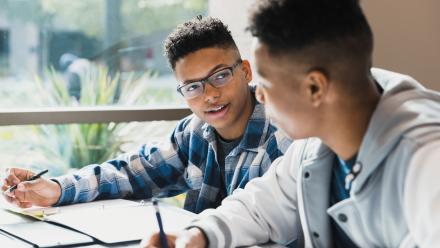Download a Graphic Organizer
Possible Sentences is a vocabulary strategy that activates students’ prior knowledge about vocabulary and concepts. Before reading, students are provided a short list of vocabulary words from their reading, which they group and eventually use to create meaningful sentences. After reading, students check to see if their “possible sentences” were accurate or need revising.
Why use possible sentences?
Possible Sentences are great because they spark students’ curiosity about new vocabulary and readings. By asking your students to guess how the words may be used in the text, you are hoping they are as equally enticed to read the selection and determine if their sentences were accurate.
How to create and use the strategy
- Before students read the text, visually display the chosen vocabulary.
- Ask students to define the words and pair related words together.
- Ask individual or pairs of students to write sentences using their word pairs. Remind students that their sentences should be ones they expect to see in the text as they read.
- Have students read the text and compare their possible sentences with the actual sentences within the text.
- If your students’ possible sentences are inaccurate, ask them to rewrite their sentences to be accurate.
- Invite students to share their sentences with the class.
Strategies in action
Let’s listen to a middle school teacher discussing how she uses the possible sentences strategy with her students to predict the content of their textbook readings.
Tips for success
- Students can either share their sentences before or after they have read the text. Completed as a post reading game, students share their sentences without disclosing which are accurate or inaccurate. Teams of students can try to decipher, based on their reading, which sentences are accurate.
